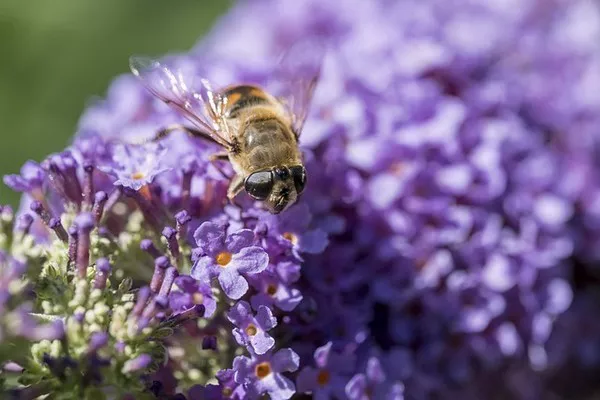Garden enthusiasts have long understood the role certain flowers play in attracting pollinators, but new research delves deeper into the intricate connection between plant nutrition and bee communities. Scientists from the USDA Forest Service’s Rocky Mountain Research Station and the University of Nevada, Reno have uncovered valuable insights that may not only enhance garden design but also contribute to the fight against pollinator declines, especially in rangeland restoration projects.
Published in the Proceedings of the National Academy of Sciences, the study focused on the foraging habits of wild bees, revealing that the nutrition found in plant pollen plays a pivotal role in determining which specific bee communities are drawn to particular gardens. Lead author Dr. Anthony Vaudo, a research biological scientist at RMRS, emphasized the importance of understanding the diverse nutritional needs of different bee species.
“Nutrition is widely recognized as a key factor in addressing pollinator declines, and plants vary in the protein and lipid content of the pollens they offer to bees,” said Dr. Vaudo. He underscored the significance of pollen nutrition, especially for larval development, as larvae depend on pollen for their growth.
The researchers conducted a comprehensive study, sampling the proteins and lipid content of the pollens of 109 plant species in the Great Basin region. This snapshot of the nutritional landscape allowed the team to observe the foraging patterns of 75 varieties of pollen-collecting bees. The results demonstrated that the nutritional content of pollens in plant communities predicted which bee communities the plants would attract.
The study highlighted that plants within related genera share similar pollen nutrition, making them functionally similar for bees. This valuable information can be utilized to predict how bees might choose a different host plant in a new environment. Importantly, the research revealed that many bees do not show allegiance to a particular plant family or genus; instead, their preference is rooted in basic nutritional reasons.
The implications of this research are far-reaching, particularly in the conservation of bee habitat and plant communities. Dr. Vaudo sees exciting opportunities for future restoration research, suggesting that designing projects with more nutritionally diverse plants could attract a higher diversity of bees.
“This has exciting opportunities for future restoration research and could change the way bee communities can be conserved or improved. For example, designing a restoration project with more nutritionally diverse plants and testing to see if they attract more bees or a higher diversity of bees,” explained Dr. Vaudo.
The study’s multidisciplinary approach, with critical contributions from co-authors Dr. Anne Leonard and Dr. Lee Dyer from the University of Nevada, Reno, brings together expertise in behavioral studies and statistical analysis. Dr. Leonard’s “bee perspective” and consideration of community behavior, coupled with Dr. Dyer’s statistical developments, added depth and nuance to the project. Together, the team has shed light on the intricate relationship between pollinators and plant nutrition, opening avenues for more effective conservation strategies.


